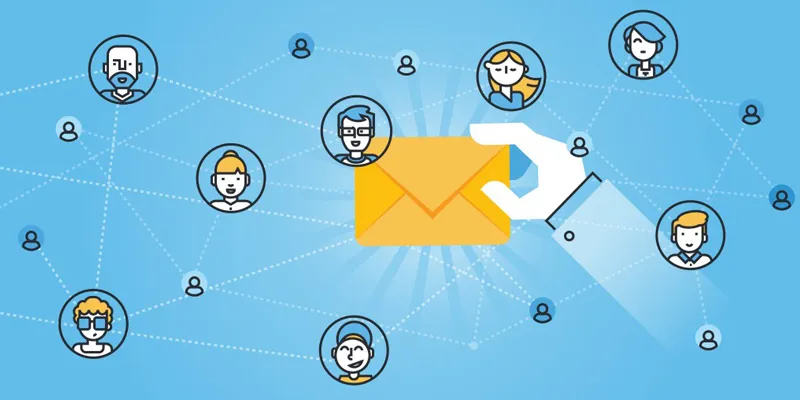How to craft the perfect cold email for maximum results
It’s difficult to get results from conventional email marketing. With cold emails, it’s even harder. Cold emailing involves contacting people who do not know you or your brand with a prospect they might be interested in. While it may sound suspiciously like spam emailing, it isn’t. Several salespeople and marketers use cold emails to generate sales and high-quality leads from people who are inaccessible through other channels. But this tactic is understandably a difficult task. It requires you to convince the recipient that you aren’t wasting their time, explain how and why you got in touch, and how you want them to help you – all in the space of a few sentences. It seems almost impossible but it certainly isn’t. Here are a few tips to help you get the most out of your cold emailing efforts:

Image : shutterstock
Introduce yourself
When you're sending out cold emails, remember that you're a stranger to the person and that it's your responsibility to introduce yourself. You should tell your contact, in brief, about yourself and the organisation you represent. Also, since people are always wary of emails from unknown contacts, you should explain how you got their email id. Mentioning a reference, such as a common connection on LinkedIn, usually works best.
Personalise your message
There are thousands of readymade cold email templates on the internet available for free use. Stay away from them. Cold emails should feature content that is specifically tailored for the recipient. This can't be done away with a brief Google search about the person and mentioning the most popular things they are associated with. It requires in-depth research to truly understand the person and their interests. This way you can make use of valuable, obscure information that only a truly interested person would have discovered. It also helps to mention why you're seeking their help, and not anyone else’s. The sense of importance they'll feel when that happens goes a long way to them helping you.
Keep it clear and concise
The average office worker receives over 100 emails each day and the high-to-mid level executive whom you’re cold emailing probably receives a whole lot more. Their chances of opening your email are already slim, and if they do, you don’t want to lose the opportunity by presenting them with a lengthy message that takes a lot of time and effort to read. Make sure that your email copy is clear and concise. It should condense all the required information in no more than five sentences. You should also present your recipients with clear options that make it as easy as possible for them to take the desired action.
Give them something in return
A cold email involves you asking someone for a favour. And most people aren’t in the habit of handing out favours if they’re not getting anything in return. So, you should try to make responding to your email worth their while. Perhaps you found a problem of theirs during your research that you can solve; or you can offer to connect them with a person who can. Not offering anything in exchange for their help can come off as rude and self-serving.
Leverage your email signature
Email signatures are a powerful tool if used properly. In the case of cold emails, where the recipient has no prior knowledge of the sender, email signatures provide an invaluable space to provide all the contact information that would be out of place in the main message. It can include your phone number, website link, and any other details that you may like to add.
Time it right and follow up
When you send a cold email is an important part of this sales tactic. Emails sent early on weekdays have the highest chance of garnering a response as people are least bogged down with work then. You may still not get a response though, which means that you’ll have to follow up. Send them a couple more emails in case the first one got lost in their inbox. If they still don’t respond, you should get the hint and stop sending them more lest you come off as a spammer. If you find this happening often, it’s a good idea to step back, analyse your email, tweak a few elements, and see if it works then.
Cold emails are a powerful tool for increasing sales and acquiring leads, but only when they’re done right. And like any other sales and marketing tactic, it takes regular practice to perfect them.







